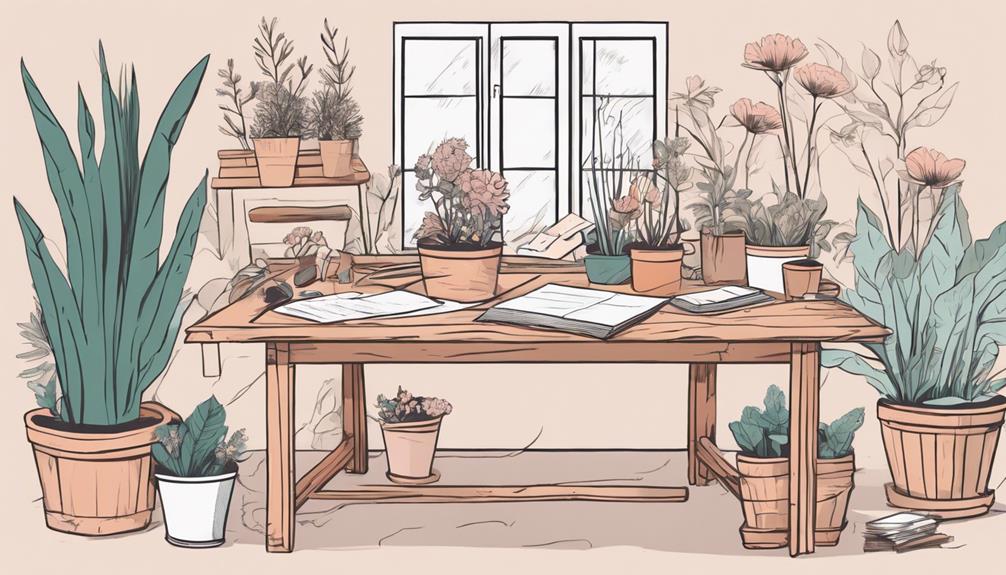How To Become More Self-Sufficient Without Starting a Full-Blown Farm…
Want to start preserving your harvest, making your own soap, or building a backyard root cellar — but not sure where to begin? “Homesteading Advice” gives you instant lifetime access to 35+ practical homesteading books on food preservation, veggie gardening, DIY natural cleaning products (save over $250 per year with this skill alone), brewing, off-grid energy, and a whole lot more…
Click Here To Check It Out Now!
“I’m setting up my backyard farm and I want to make sure I understand everything before I start digging. What’s the best way to assess my site to ensure I’m making the most of my space and resources? My backyard is pretty varied; some parts get more sunlight than others, and I’ve noticed that the soil quality changes throughout. It’s a bit overwhelming, so any advice would be appreciated.” Thanks, Brenda, Austin, Texas, USA.
What Are The Best Tools For Site Assessment?
Hi Brenda, you’re on the right track by wanting to conduct a thorough site assessment before diving into your backyard farming project. Proper assessment is key to ensuring you make the best use of your space and resources. Here’s a detailed guide to help you through the process.
Importance of Assessing Your Site
Understanding your backyard’s specific conditions can help you make informed decisions about everything from plant selection to placement. This step saves time, effort, and resources in the long run by preventing issues that might arise from poor planning.
1. Sunlight Exposure
One of the first things to evaluate is how much sunlight different areas of your backyard receive throughout the day. Plants have varying sunlight requirements, so this information is crucial. Here’s how you can do it:
- Observation: Spend a day observing your yard. Note which areas get full sun (6+ hours), partial sun (4-6 hours), and shade (less than 4 hours).
- Sun Calculator Apps: Utilize mobile apps like Sun Surveyor or Sun Seeker to track sunlight patterns.
This helps you position sun-loving and shade-tolerant plants in the most suitable spots.
2. Soil Quality and Composition
Your soil is the foundation of your backyard farm, and knowing its composition can guide what you plant and how you amend the soil. Here’s what you need to do:
Soil Testing Kits
These kits provide you with a snapshot of your soil’s pH, nutrient levels, and composition. You can buy these kits online or at garden supply stores. They are fairly easy to use and offer valuable insights.
Professional Soil Testing
For a more detailed analysis, consider sending a soil sample to a local agricultural extension office. They can provide a comprehensive report and recommendations for improving soil fertility.
3. Drainage and Watering
Proper drainage is essential for plant health. Poor drainage can lead to root rot, while overly dry soil may stress plants. Here’s how to check drainage:
- Visual Inspection: After a heavy rain, note any areas where water pools or runs off quickly.
- Drainage Test: Dig a hole about 12 inches deep and fill it with water. If it takes more than 24 hours for the water to drain, you have poor drainage.
Based on your findings, you may need to amend the soil or create raised beds to improve drainage.
4. Local Climate and Microclimates
Understanding the larger climate patterns in Austin, Texas, as well as the specific microclimates within your yard, can guide your plant selection. Here’s how to assess this:
- Climate Data: Use resources like the USDA Plant Hardiness Zone Map to understand your broader climate zone.
- Microclimate Observation: Note areas affected by buildings, fences, or other structures that can create warmer or cooler spots.
Microclimates can offer unique growing opportunities, such as extending the growing season for certain plants.
5. Wind Patterns
Strong winds can damage plants and affect pollination. To gauge wind patterns in your backyard:
- Observation: Spend time observing prevailing wind directions and strengths throughout different times of the year.
- Windbreaks: Plan for natural or artificial windbreaks like hedges or fences to protect vulnerable plants.
Understanding wind patterns helps you plan plant protection and placement to reduce stress on your crops.
6. Existing Vegetation and Wildlife
Take stock of existing plants, trees, and wildlife in your backyard. This information can help you integrate your new garden with the existing ecosystem:
- Beneficial Plants: Identify and preserve plants that attract pollinators or serve as natural pest deterrents.
- Pests and Wildlife: Note any common pests or wildlife that might pose challenges and plan accordingly.
7. Physical Layout and Accessibility
Considering the physical layout and accessibility of your backyard ensures an efficient and enjoyable gardening experience:
- Paths and Walkways: Plan for paths that allow easy access to different parts of your garden without compacting soil.
- Tool Storage: Designate areas for storing tools and supplies close to where you’ll need them.
This helps you make the most of your space and ensures a smooth workflow.
8. Water Source and Irrigation
Access to a reliable water source is vital for your plants’ health. Evaluate your water options and plan an efficient irrigation system:
- Water Source: Determine if you’ll use rainwater harvesting, municipal water, or another source.
- Irrigation Methods: Decide between watering cans, hoses, drip irrigation, or sprinklers based on your garden’s layout and needs.
Efficient water management can save both water and time, making your gardening efforts more sustainable.
Final Thoughts…
Brenda, taking the time to thoroughly assess your site will pay off in the long run by setting a strong foundation for your backyard farm. Keep observing and adapting as you learn more about your space. Thank you for your thoughtful question, and happy gardening!

